Iceland is quite unlike anywhere else in the world. It’s a cliché to say, but this really is the Land of Ice and Fire. Active volcanoes constantly light up the skyline and shake the earth, while vast ice sheets cover the interior of this barren yet dramatic land throughout the year.
Iceland has waterfalls, glacial lagoons, roaring geysers, and so much more. You can spend your days soaking up the culture in Reykjavík, lazing in thermal hot springs, or heading to the Arctic north, where whales and icebergs await you!
To inspire your next adventure, here are the best places to visit in Iceland.
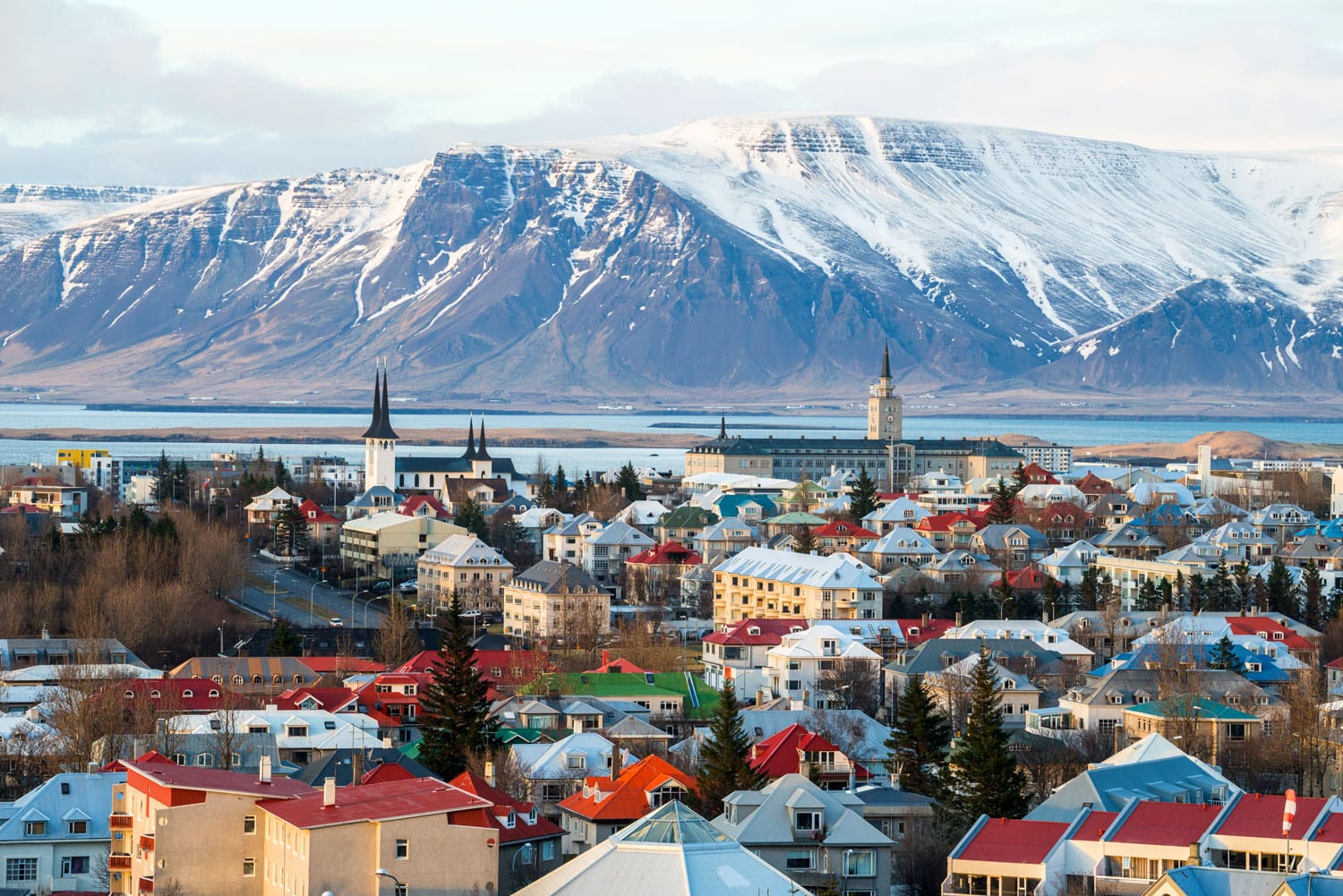
1. Reykjavík
Reykjavík is the Icelandic capital, so of course it’s going to be one of the best places in Iceland to visit!
If it’s your first time in the country, spend a few days enjoying the sights in Reykjavík. If it’s your second, third, or fourth time traveling to Iceland, then there’s always something new to see.
Start with a bird’s-eye view of the city from the top of Hallgrímskirkja (a Lutheran parish church), take a whale watching tour of the harbor, and lounge around in one of the city’s many public swimming pools (which are all thermally heated).
Experience Viking history at the Settlement Exhibition, learn about whales at the Whales of Iceland exhibition, and don’t forget to save time for the National Museum of Iceland.
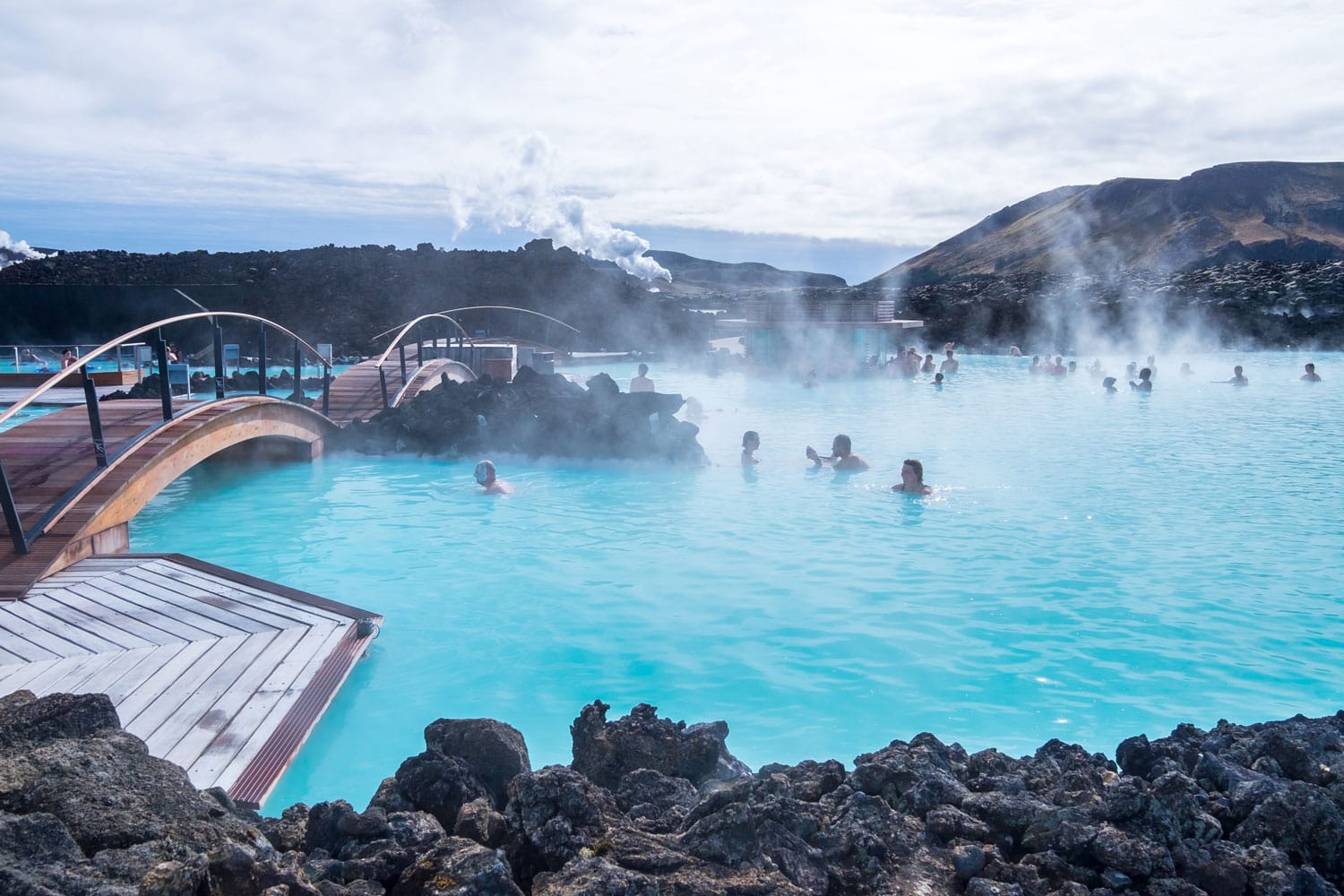
2. Blue Lagoon
The Blue Lagoon is a classic stop on any Icelandic itinerary, and you can visit on a day trip from Reykjavík or, better yet, call in as soon as you land at the airport.
The Blue Lagoon is found particularly close to Keflavik International Airport, and you can enjoy a few hours soaking up the thermal blue water and blue, mineral-rich mud of the bathing pools before catching your flight in or out of the country.
It’s relaxing and it’s refreshing, but don’t forget to book your ticket in advance — the Blue Lagoon always sells out.
Book your return transfer ticket from Reykjavík to Blue Lagoon here!
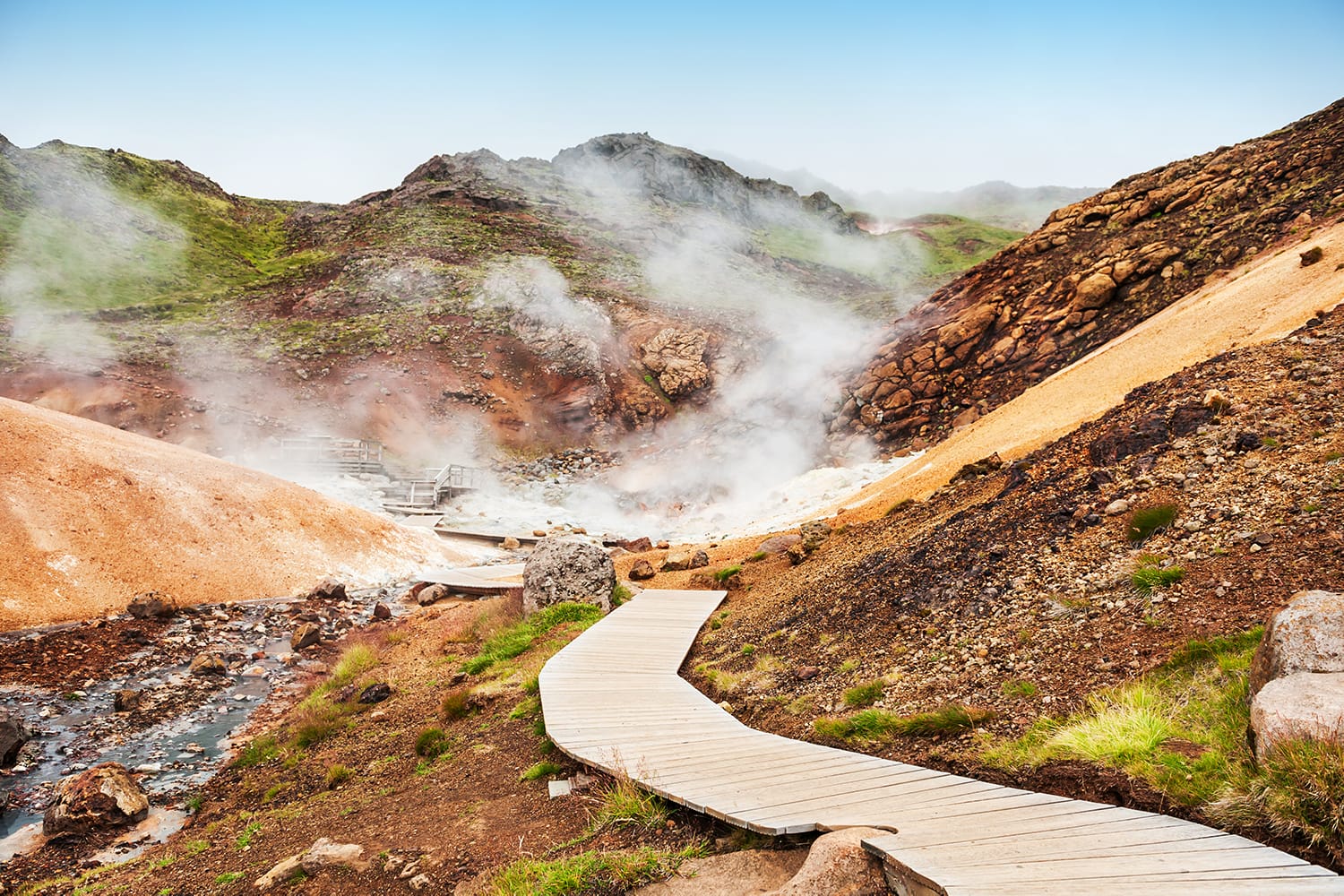
3. Reykjanes Peninsula
The Blue Lagoon and Keflavik Airport are both located on the long Reykjanes Peninsula, which juts out into the Atlantic Ocean. But swimming and catching flights aren’t the only things to do here.
This is an area of spectacular geothermal activity, and it’s known for its volcanic eruptions and incredible scenery. The peninsula is split between two continents because this is where the European and North American plates meet. You can even walk over the ever-widening gap using the Bridge Between Continents.
Explore the strange fissures of the Seltún Geothermal Area, the dramatic Valahnúkamöl Cliffs, and the equally dramatic Krýsuvíkurbjarg Cliffs, too. There are small villages, churches, and much more dotted around this strange, Icelandic peninsula.
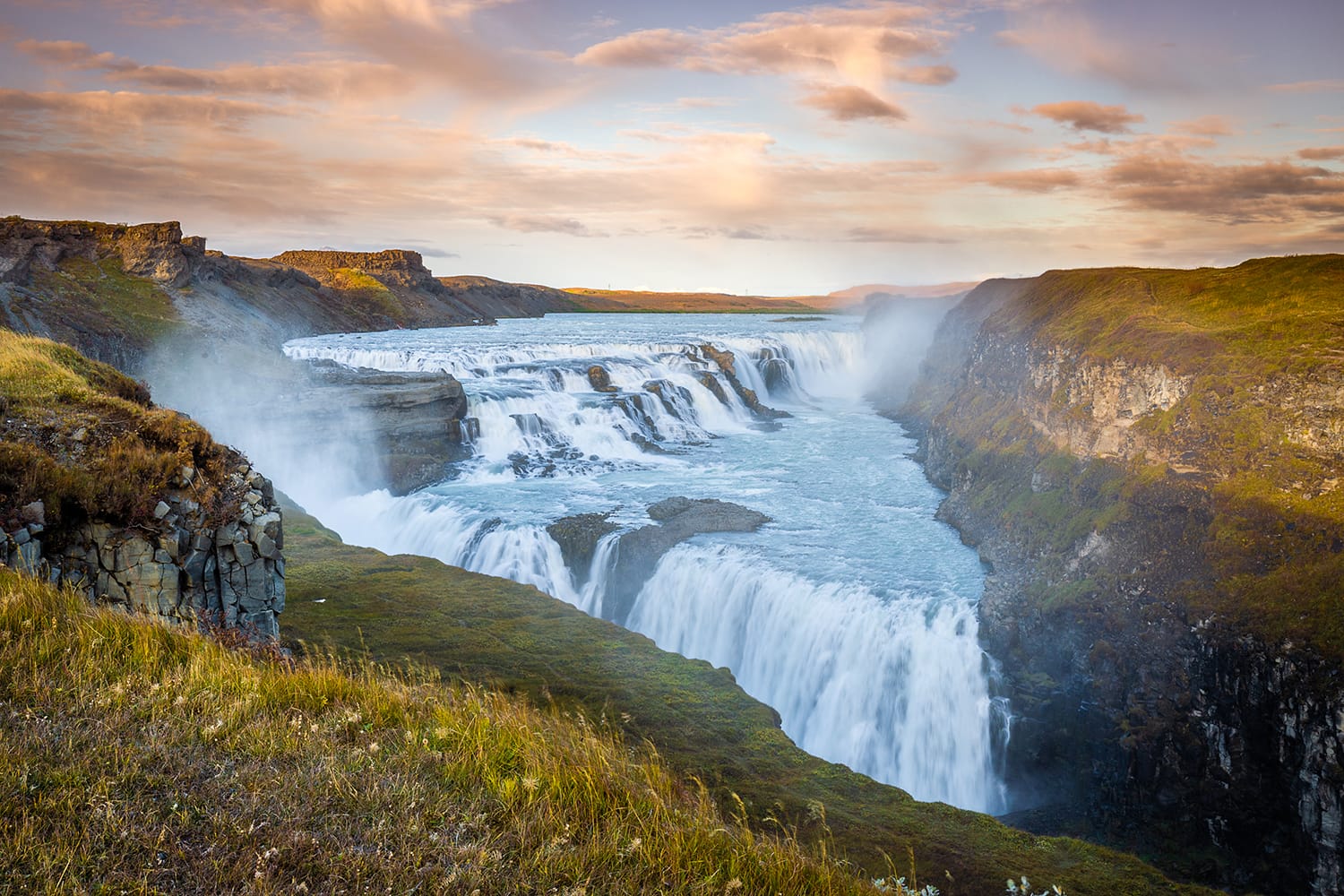
4. The Golden Circle
The Golden Circle isn’t one place but three of the best places to visit in Iceland. A classic tourist route taking in some of the best scenery of Iceland, the Golden Circle comprises three major tourist attractions — Thingvellir National Park, the Haukadalur Geothermal Area, and Gullfoss, one of Iceland’s best waterfalls. The Golden Circle is the perfect day trip from Reykjavík and a must-do for first-time visitors to Iceland.
From Reykjavík, head first to Thingvellir National Park, a large rift valley that’s both historic and scenic. This national park protects the area where things, or democratic meetings, were traditionally held for centuries. It’s also a location where the North American and European tectonic plates are diverging. If you brave the cold, you can go snorkeling or diving between them at the Silfra rift!
From Thingvellir, drive to the Haukadalur Geothermal Area, where you’ll find the explosive geysers intermittently spurting high into the air. Finally, head to Gullfoss (the Golden Waterfall), where you’ll have a dramatic cliffside view over one of Iceland’s largest waterfalls.
Book a full-day Golden Circle tour from Reykjavík here!
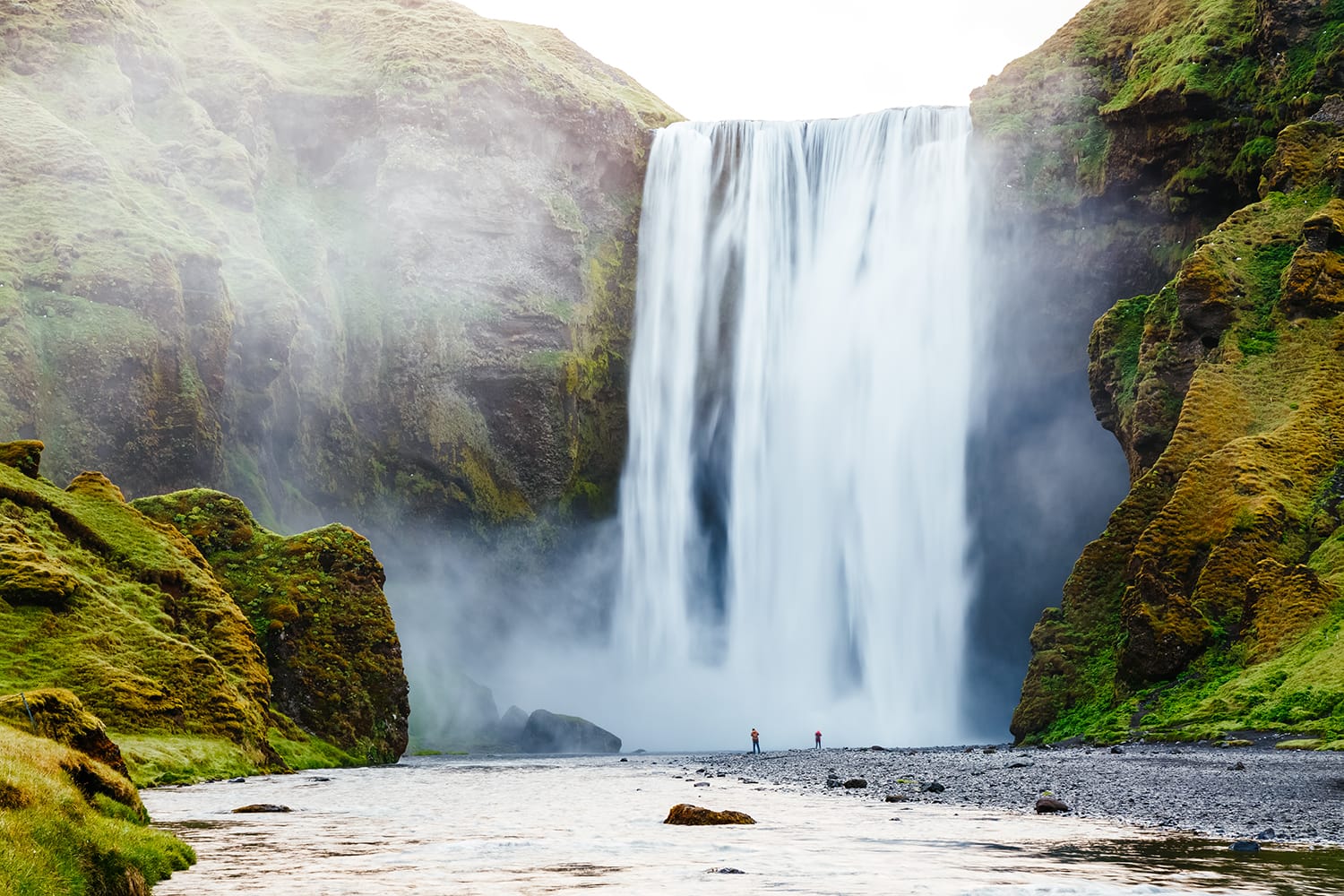
5. Seljalandsfoss and Skógafoss
Every tourist who heads outside of Reykjavík visits Seljalandsfoss and Skógafoss. These two waterfalls are located just a short drive along the southern coast, and you can see them from the highway itself.
They do get busy, particularly in summer, but that’s not just because they are easy to visit but because they are, quite simply, stunning. The first waterfall you’ll reach is Seljalandfoss, where a tall plume of water drops over the cliff and the entrance to a large cave. You can walk around the edge of the cave and get behind the waterfall for epic (if wet) photography.
Drive along the highway, and you’ll soon reach Skógafoss, which stands in the shadow of the infamous Eyjafjallajökull Volcano (whose eruption stopped all air traffic in 2010). Skógafoss is one of the largest waterfalls in Iceland, dropping 60 meters (196 feet) in an almost perfectly straight line from the top of the cliffs.
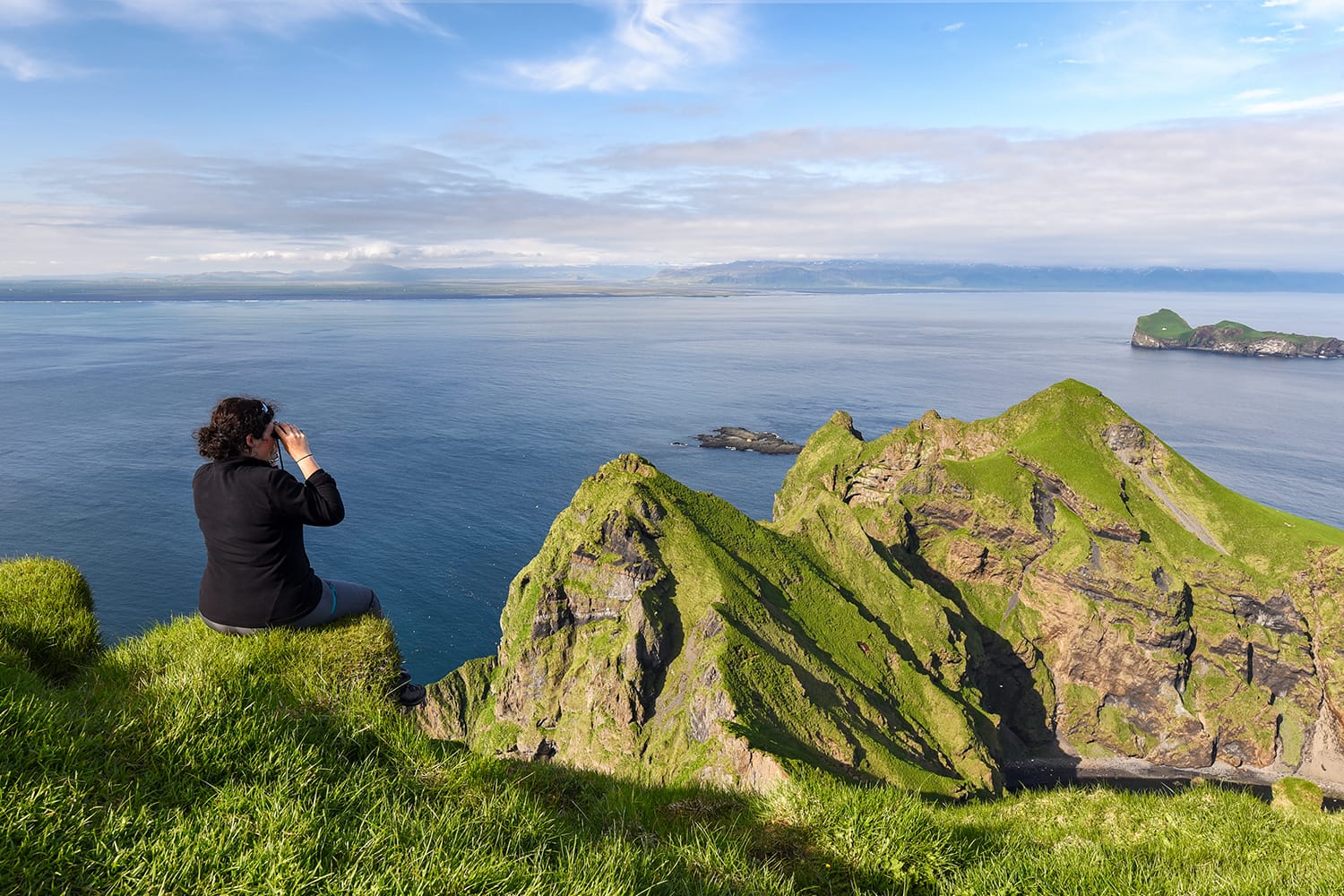
6. Heimaey
Located a few miles off the south coast of Iceland, Heimaey is the largest island in the Vestmannaeyjar archipelago, a place renowned for its isolation and its puffins.
You can reach Heimaey on the ferry, and in summer you’ll find that it’s home to just a few thousand people but millions of puffins. It’s one of the most important puffin breeding grounds in the world, and you can join a boat tour through the archipelago to see them.
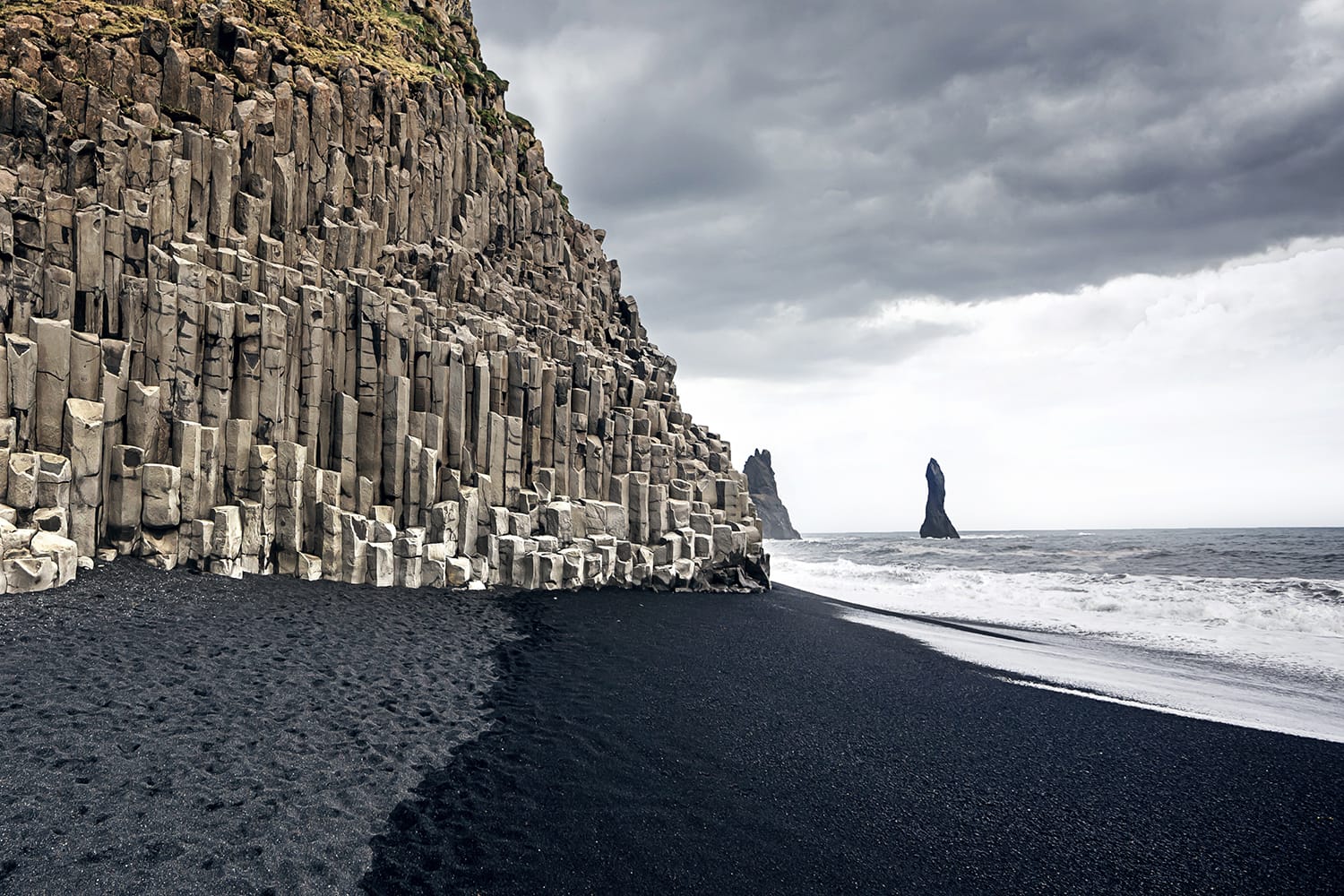
7. South Coast to Vik
The southern coastline is one of the best places in Iceland to road-trip because there are waterfalls, dramatic cliffs, and dark, black sand beaches.
The ultimate destination, though, is the small coastal village of Vik (population: 300), which stands at the far edge of the southern coast. The best sight to see is Reynisfjara Beach, where volcanic black sands have formed over millennia.
The surrounding cliffs are magnificent, with the perfectly carved basalt columns being a serious highlight of any Iceland vacation.
Book a full-day South Coast tour from Reykjavík here!
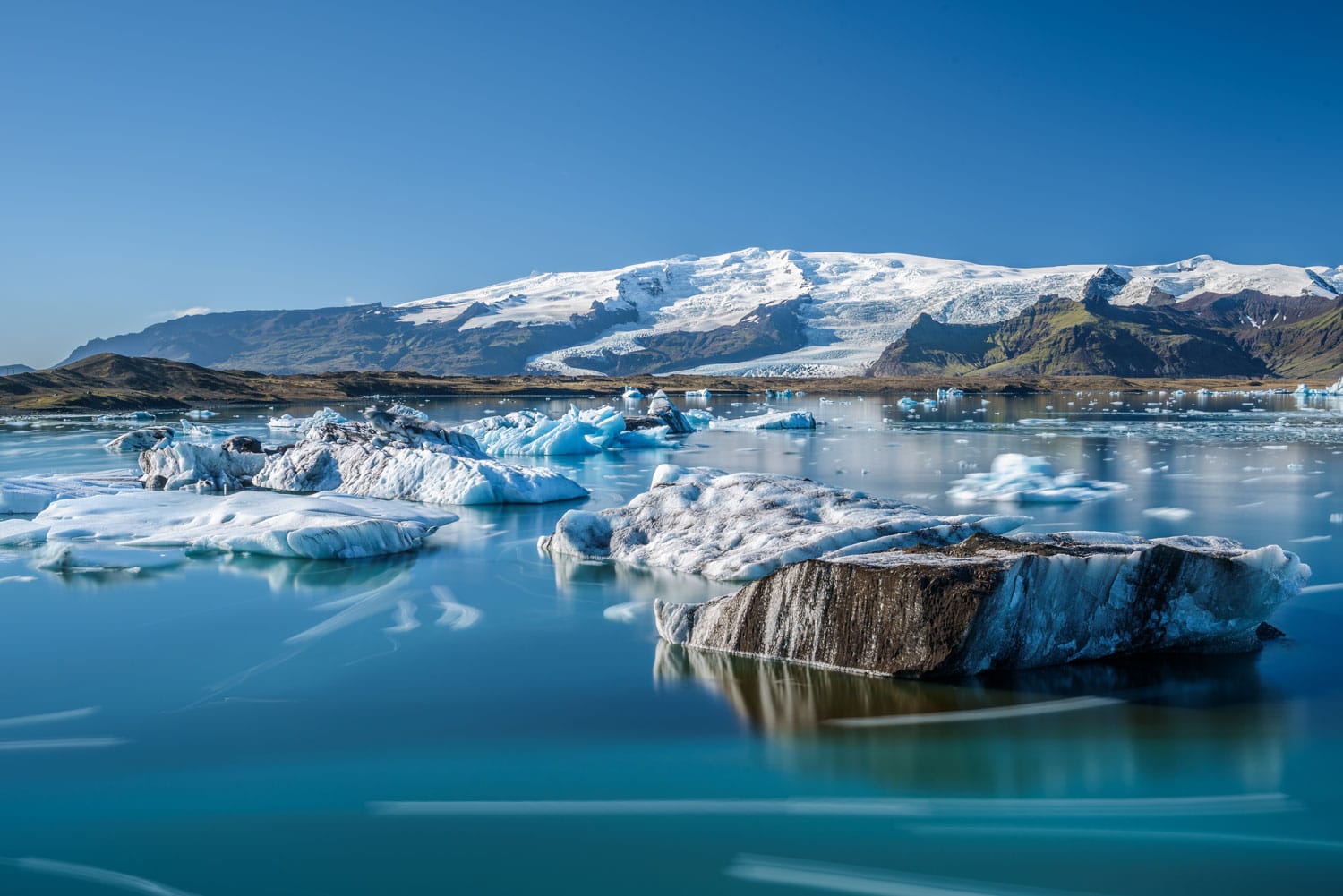
8. Jökulsárlón
If you’re still wondering what to do in Iceland, then look no further than Jökulsárlón, an iconic lagoon where enormous blocks of ice have collected after floating down from the Vatnajökull Ice Cap before eventually making their way out into the ocean.
It’s a strange, otherworldly place, and the best way to experience the lagoon is by joining a boat tour so that you can get up close to the often artistic-looking icebergs. The lagoon has featured in many Hollywood films, but sadly, it’s slowly disappearing as the ice blocks and ice caps melt.
Book a full-day Jökulsárlón Glacier Lagoon tour from Reykjavík here!
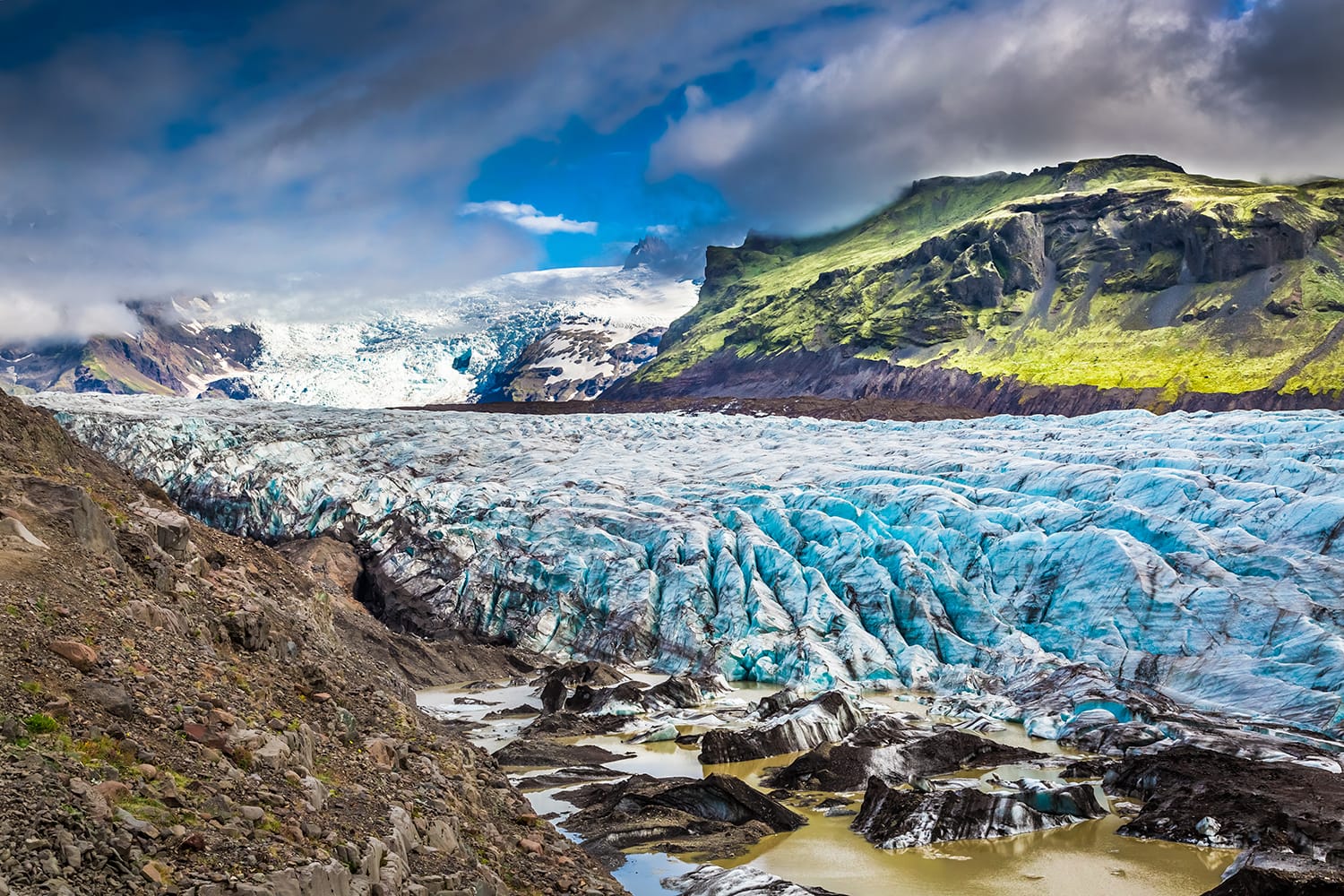
9. Vatnajökull
The Vatnajökull is 3,000 square miles of pure ice and geothermal activity, and it’s so vast that it covers most of the Icelandic interior (It’s the reason why almost the entire population lives by the coast!)
This is the second-largest ice cap in Europe, and it’s protected as part of the vast Vatnajökull National Park, which actually encompasses a whole lot more than just the glacier. The glacier is best accessed from the southern coast, where you can join lots of excursions across the ice cap in spring, summer, and fall (but not so many in winter!)
You need a guide, but touring options include massive off-road snow vehicles, snowmobiles, trekking, and best of all, ice caving. It’s an icy adventure playground and one of the best places to visit in Iceland.
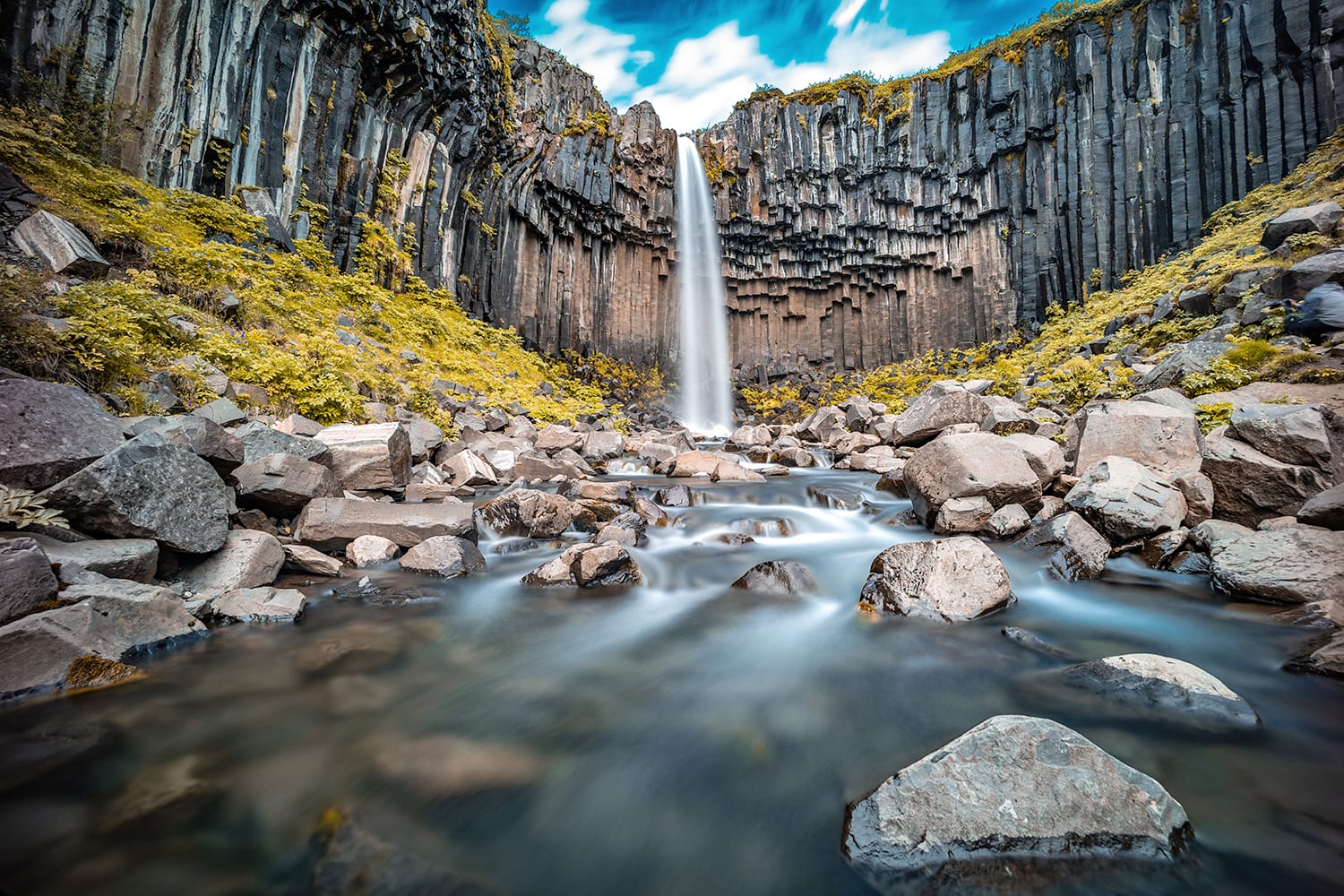
10. Skaftafell National Park
Skaftafell National Park is now technically part of the much larger Vatnajökull National Park, but so are most of the natural sights in Iceland!
The Skaftafell area is located in the southeast of Iceland and can be easily accessed from the Ring Road. The former national park comprises three major attractions, making this a fantastic stop on any road trip.
First, visit Svartifoss, the Black Waterfall. A short walk from the visitors center brings you to a dramatic waterfall that plunges over black, basalt columns. You can also walk to the edge of Skaftafellsjökull (in summer, at least), or you can join a guided tour and get deeper into the ice caves of the glacier.
The most dramatic sight is Hvannadalshnjúkur, the tallest mountain peak in Iceland. Rising to 2,110 meters (6,922 feet), Hvannadalshnjúkur can be climbed in summer, with an experienced guide.
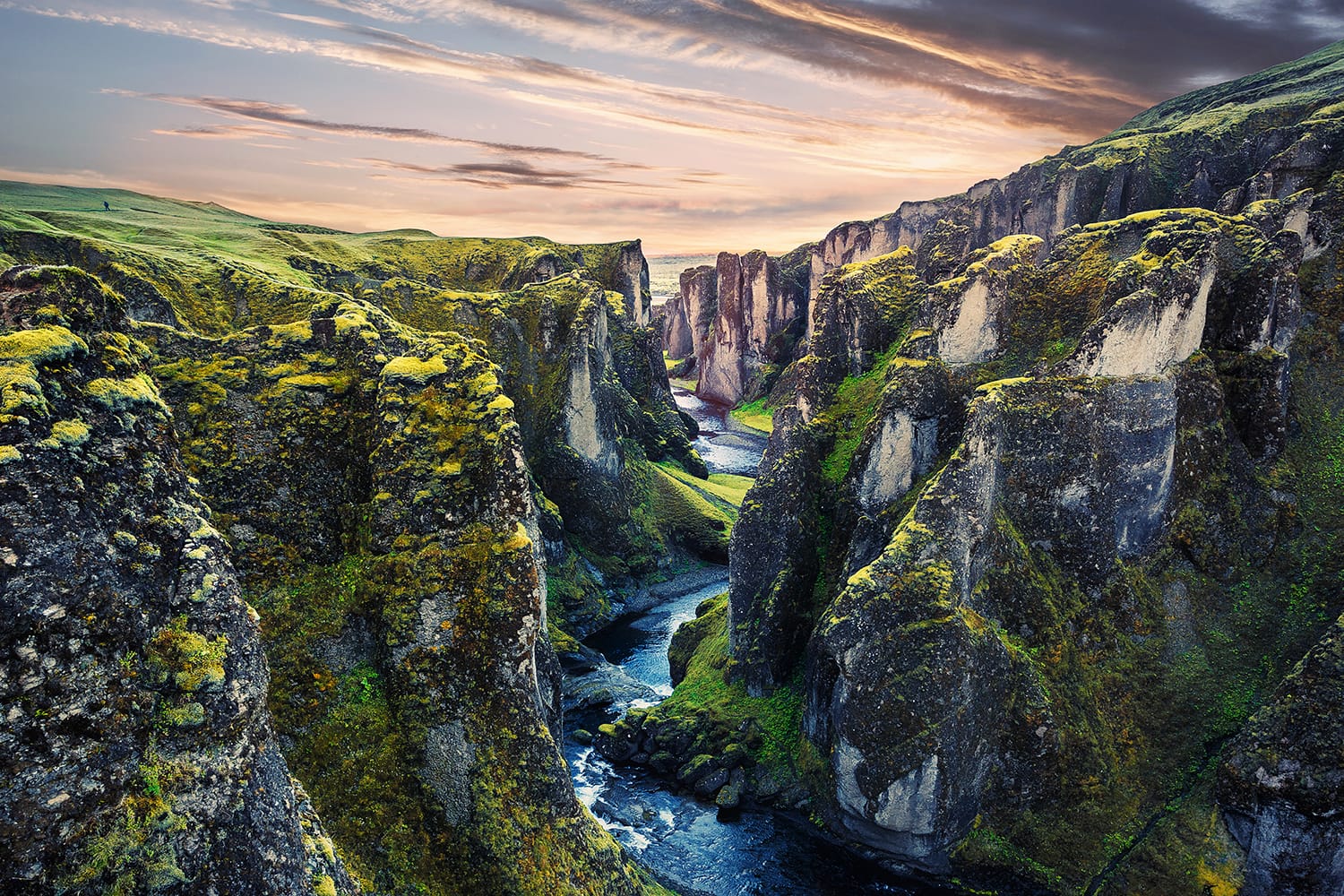
11. Fjaðrárgljúfur
This spectacular canyon isn’t too far off the southeastern portion of Iceland’s Ring Road, but it saw few visitors compared to earlier stops on the southern coastline — at least until Justin Bieber filmed a music video there, that is!
Fjaðrárgljúfur features a long winding riverbed surrounded by mossy cliffs. It’s dramatic but also fragile, and for many of the past summer seasons, the area has been closed to tourists.
Visit in the shoulder seasons when the canyon is open, and you’ll see the area at its best!
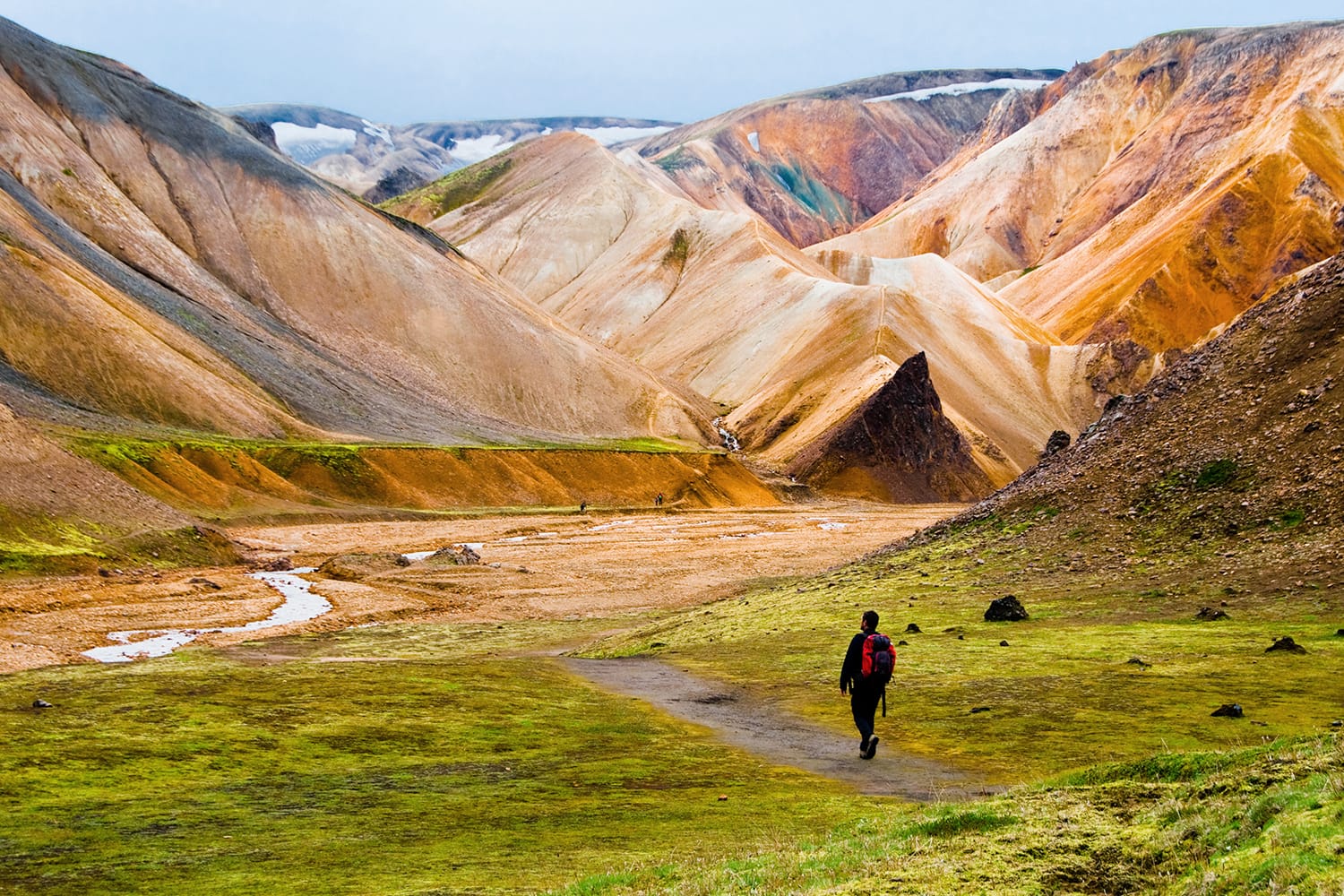
12. Icelandic Highlands
The Icelandic Highlands is a vast yet almost uninhabited plateau that rises up in the south of the country.
A visit to the Highlands is perfect for anyone looking to get a little off the beaten track because, compared to the busy Ring Road, not so many tourists make it here. The Highlands area is packed with waterfalls, thermal hot springs, and plenty of epic Icelandic scenery.
The main highlight is Landmannalaugar, an area of geothermal activity characterized by hot springs, tall mountains, and wide valleys. Háifoss is a dramatic waterfall that can be reached along an equally dramatic hiking trail. At 122 meters (400 feet) in height, it’s the third tallest waterfall in Iceland.
Book a Landmannalaugar hiking tour from Reykjavík here!
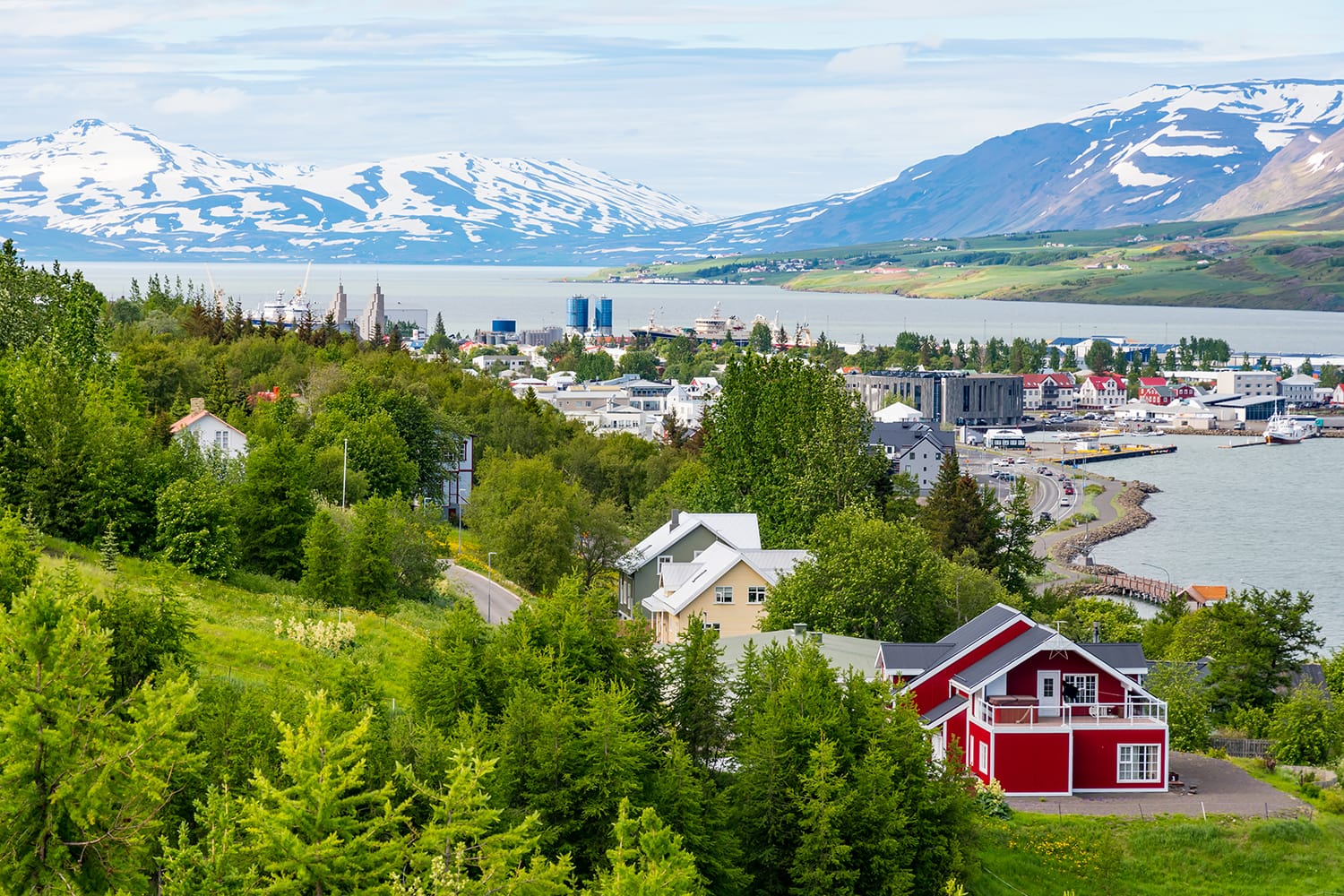
13. Akureyri
Akureyri is the northern capital, perhaps because it’s the only city in Iceland located in the north. This small “city” (total population around 18,000) is a fantastic base to explore the northern climes of Iceland, as it’s close to Mývatn Lake and the whale-watching trips in Húsavík.
It’s also a fascinating place to visit on its own merits. Sights are limited but include the historic Laufás Turf Houses and the Arctic Botanical Garden, as well as the local museum and a distinctively Icelandic church.
In winter, this is one of the top places to visit in Iceland if you’re searching for the Northern Lights. It’s perpetually dark and you’ll need to fly in from the south, but head outside the city and the Northern Lights are almost always guaranteed to be shining.
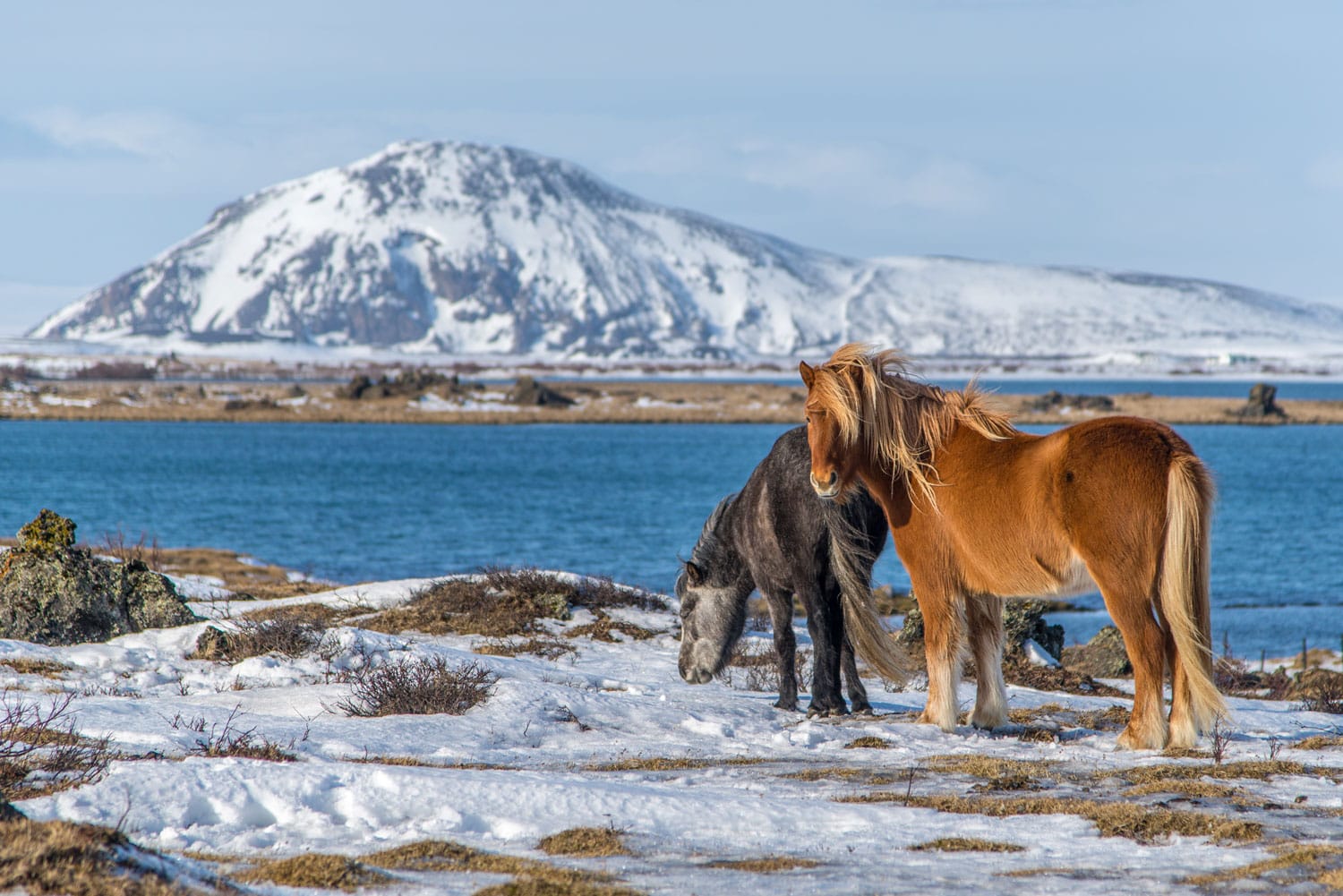
14. Lake Mývatn
If you’re visiting to see nature in Iceland, then look no further than Lake Mývatn. This freshwater lake is one of the most biodiverse areas in the country, and it’s popular among birdwatchers seeking out migratory species in the summer.
You can hike around the edge of the lake, where you’ll be in the shadow of massive (and active) volcanoes. The landscapes are unusual, and at the Dimmuborgir Lava Fields, you can surround yourself with Icelandic folklore as you walk among the troll-like lava formations.
After a day of lakeside activities, relax with a cold Icelandic beer in the warm, thermal waters of the Mývatn Nature Baths (book entrance tickets here).
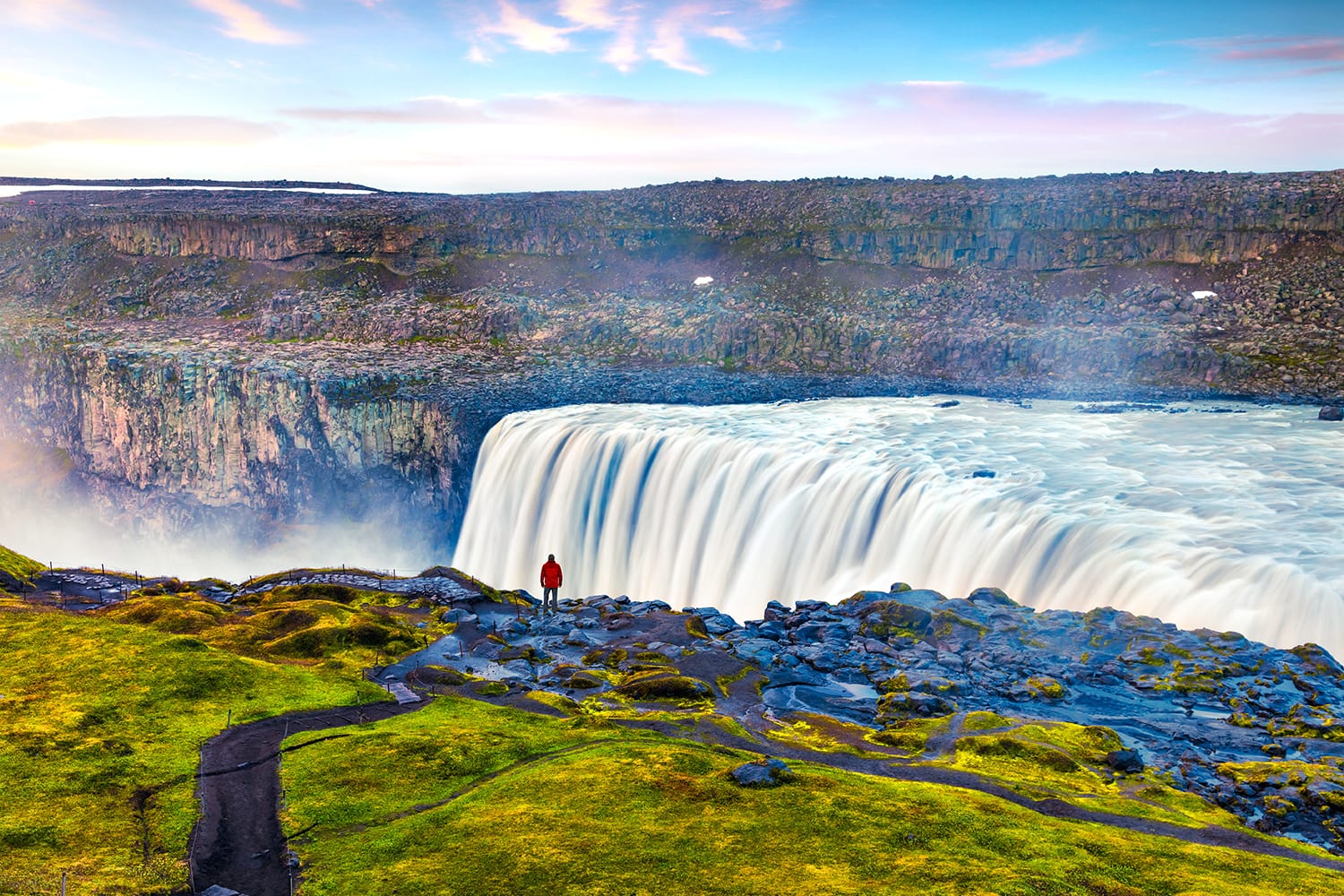
15. Dettifoss
Iceland is well known for its waterfalls but few are quite as powerful as Dettifoss, a beast of a waterfall that you’ll find in the far north.
A quick detour from the famed Ring Road will bring you to the waterfall. The sheer scale of Dettifoss is awe-inspiring, and the quantity of water that’s thrown over the precipice every second makes this the second most powerful waterfall in Europe.
Dettifoss stands 44 meters (144 feet) tall, and while it’s admittedly not the most photogenic waterfall, it’s a truly impressive display of Iceland’s powerful natural environment in action.
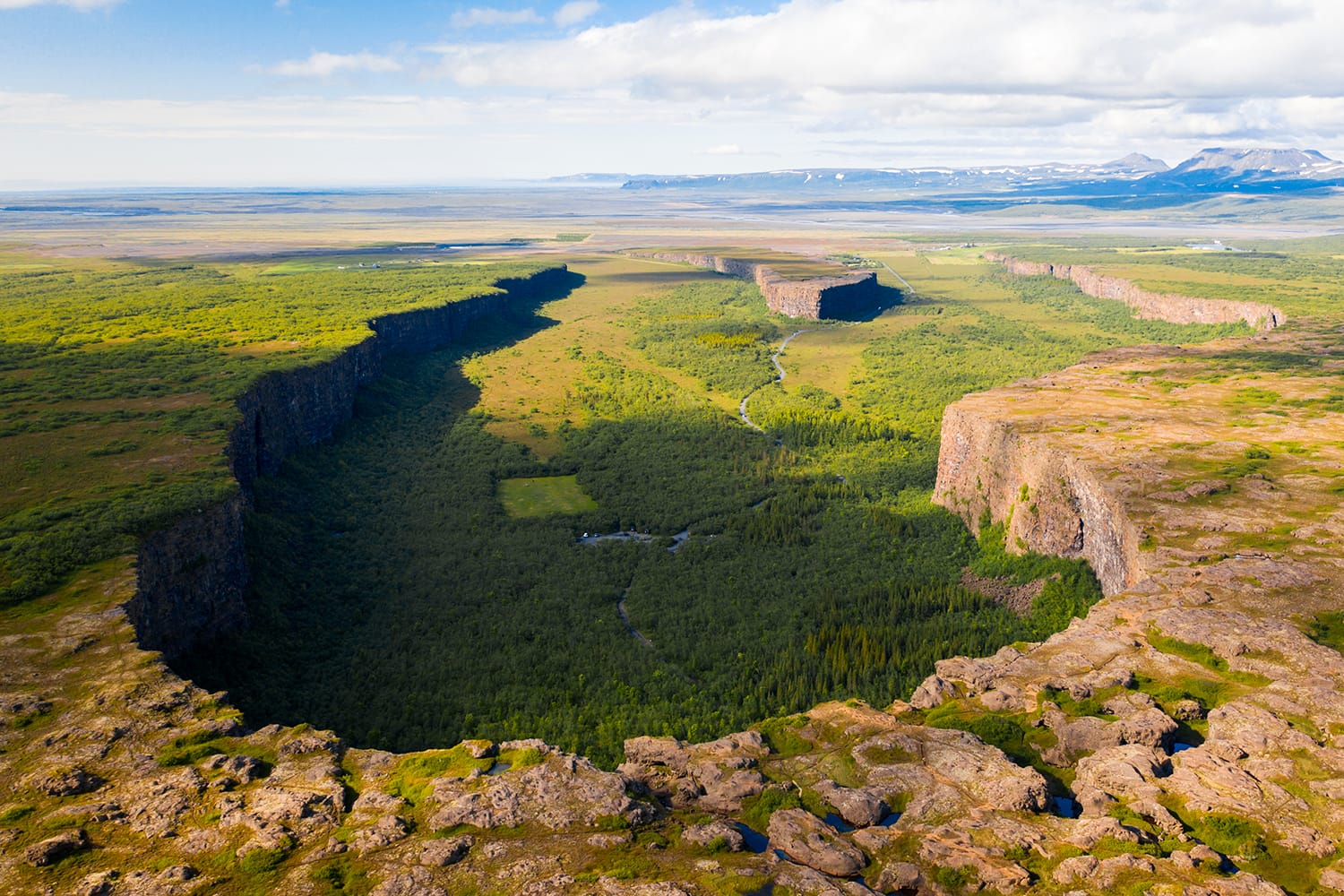
16. Ásbyrgi Canyon
Located in the far north of the country, one of the most unusual natural tourist attractions in Iceland is Ásbyrgi Canyon. This unusually shaped canyon is three kilometers (just under two miles) long and one kilometer (1,093 yards) wide, and in summer, the interior of the canyon is colored a vivid green by the trees and plants that spring to life.
This is one of the few places in Iceland where you can find trees (the rest having been chopped down long ago), making it a highly unique stop on any itinerary. The tall cliffs of the canyon rise up to 100 meters (328 feet) above the forest, adding to the surrealness of the place.
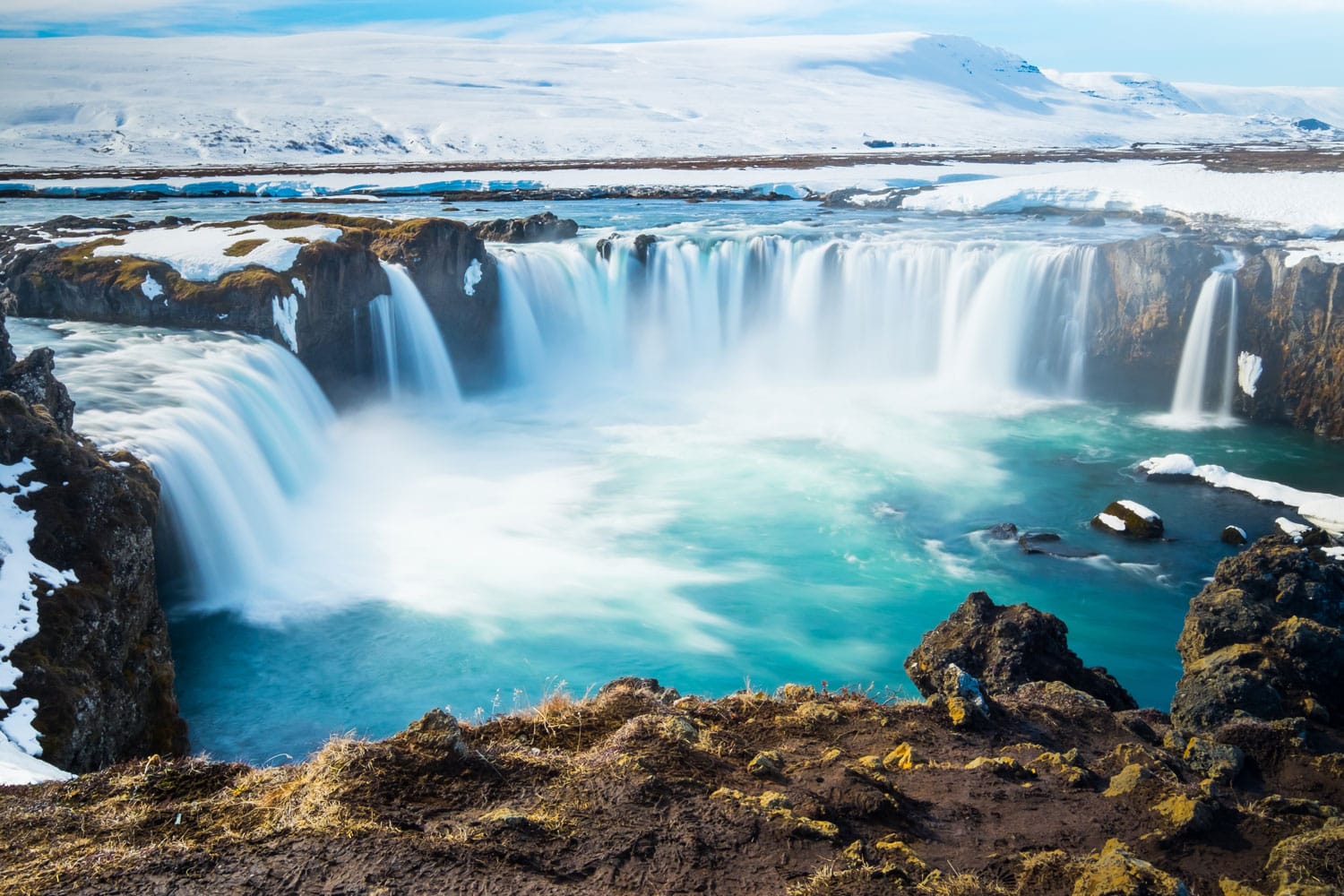
17. Goðafoss
Visiting Goðafoss, or the Waterfall of the Gods, is one of the best things to do in Iceland if you’re searching out stunning waterfalls. Located off the Ring Road, and close to Akureyri, Lake Mývatn, and Húsavík, Goðafoss is an excellent northern stop.
This ethereal waterfall forms a wide, photogenic scene as the water plummets into the bright blue plunge pool below. The waterfall is full of life in summer, while in winter, it’s eerily frozen in time.
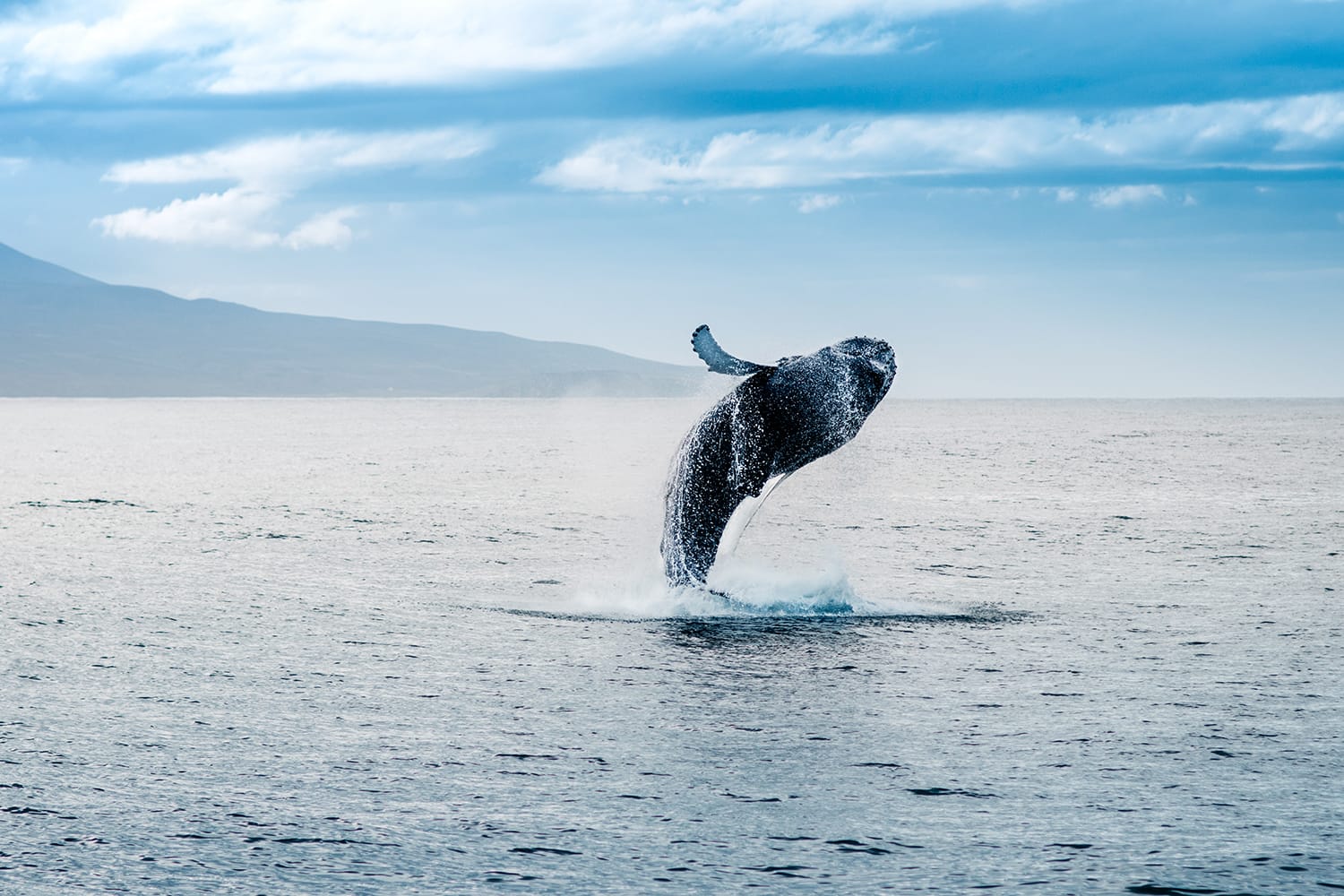
18. Húsavík
The best of Iceland has to include Húsavík, a small town on the north coast that’s better known as the whale-watching capital of Iceland. Húsavík isn’t far from the Arctic Circle, and all through the year, rich feeding grounds in the bay attract an enormous variety of whale species.
At different times of the year, you can catch orcas, blue whales, minke whales, sperm whales, and humpback whales. There are also porpoises, dolphins, pilot whales, and more.
Visit the Húsavík Whale Museum (a former whale slaughterhouse turned educational center), before joining an inevitably cold whale-watching trip out to sea.
Book a whale-watching tour from Húsavík here!
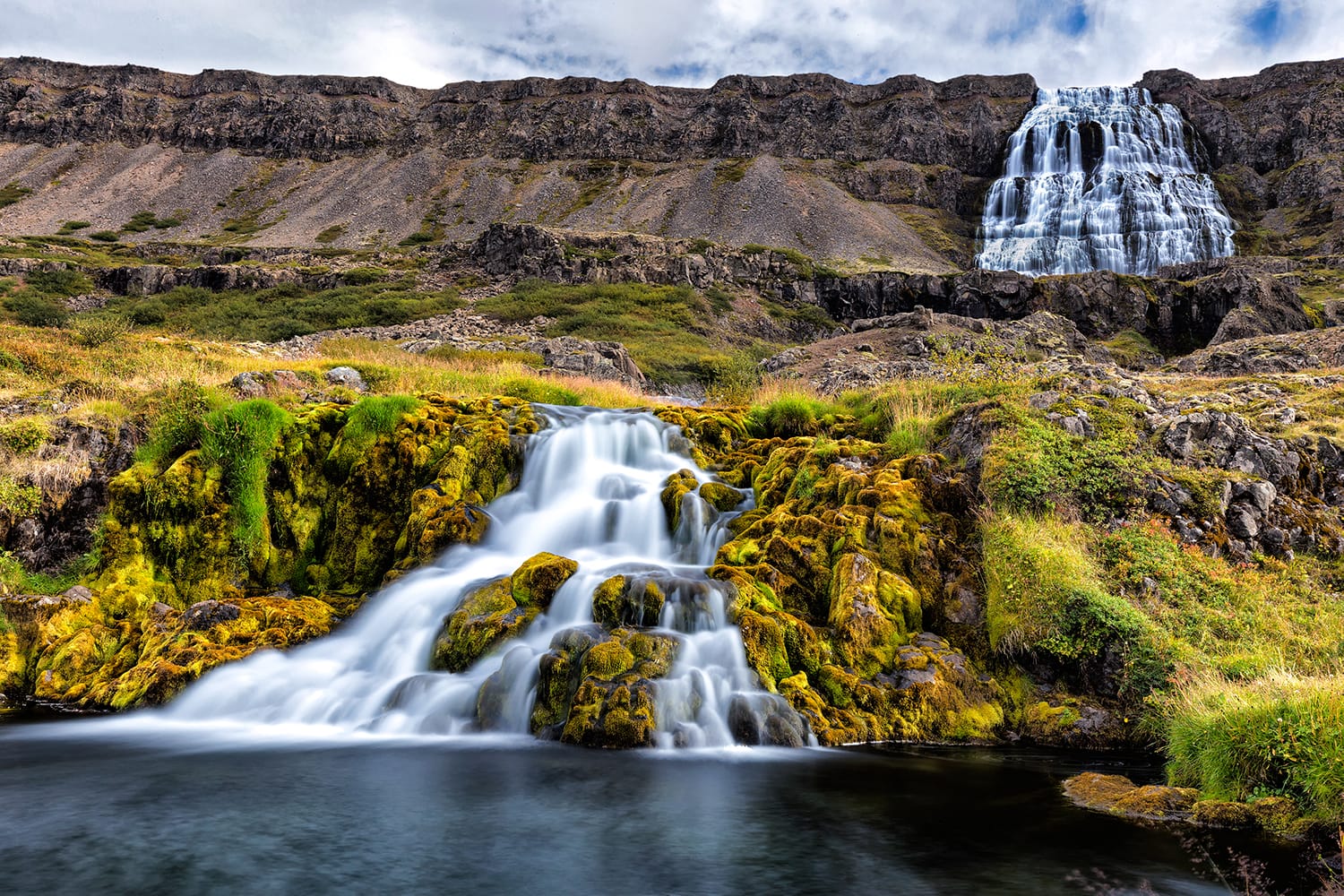
19. Westfjords
Isolated and remote, the Westfjords are all too often overlooked by tourists, even if they pass nearby on the Ring Road.
The Westfjords are characterized by starkly beautiful inlets, bays, and harbors that form an intricate network of fjords in the far west of the country.
One of the best sights is the Dynjandi Waterfall, which reaches up to 100 meters (328 feet) in height and features staggered drops feeding into different waterfalls below. Another highlight of the Westfjords is Rauðasandur Beach, a long sandy beach that features red sand.
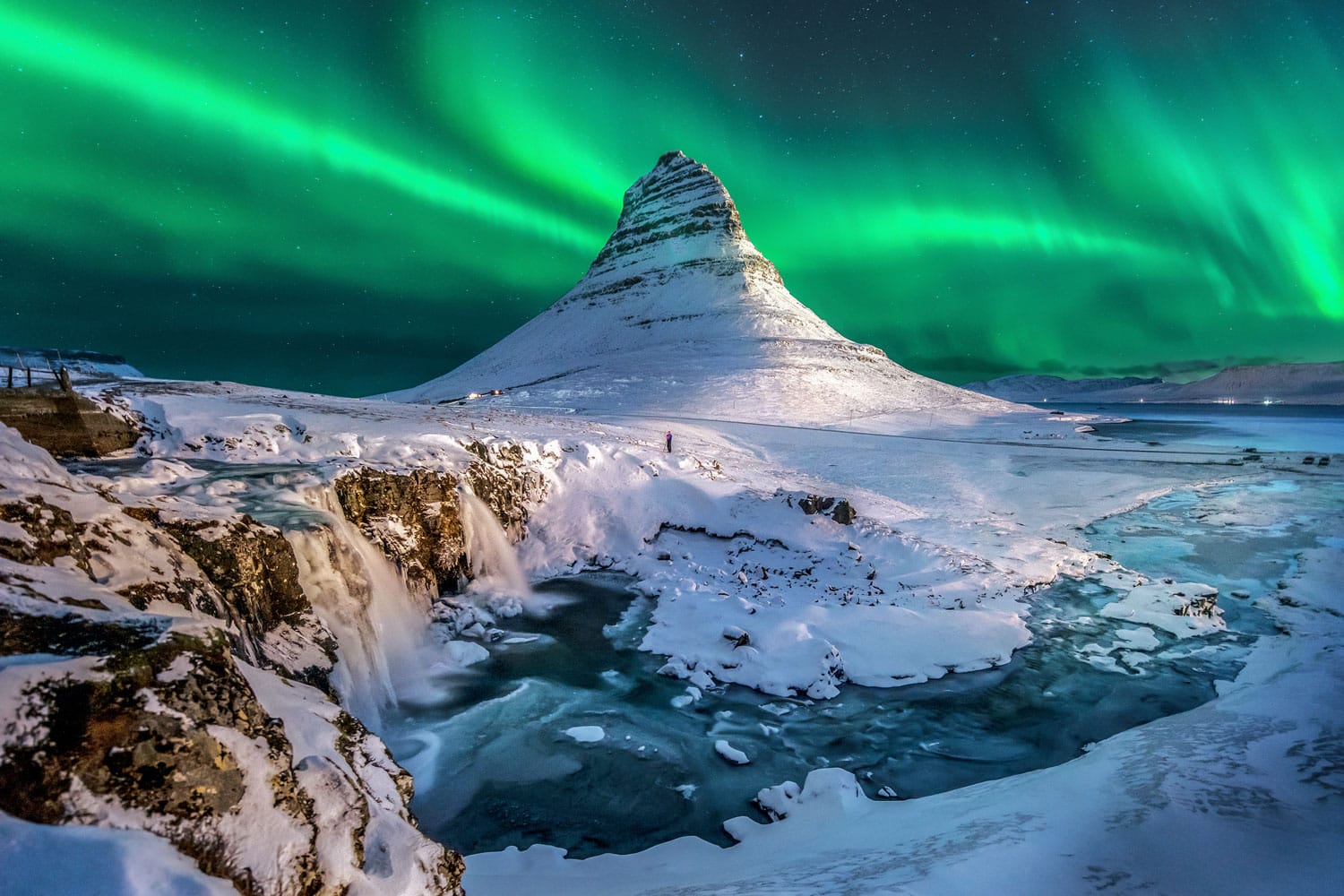
20. Snæfellsnes Peninsula
Located between Reykjavík in the south and the Westfjords in the north, the Snæfellsnes Peninsula is home to some of Iceland’s unusual coastal scenery.
The 400-meter (1,312-foot) tall Kirkjufell (a mountain so called because it resembles a church) is one of the most photographed spots in Iceland. This distinctive mountain rises above the nearby Kirkjufellsfoss and perfectly frames the waterfall for an excellent photographic opportunity.
The far western end of the peninsula is protected by the Snæfellsjökull National Park, where you’ll find a large ice cap covering a volcano — classic Icelandic scenery!
Book a full-day Snæfellsnes Peninsula tour from Reykjavík here!
Iceland truly is the Land of Ice and Fire, but there are also waterfalls, Viking heritage, dramatic coastal scenery, hiking, whale watching, the Midnight Sun in summer, and the Northern Lights in winter.
There are so many exciting and intriguing places to visit in Iceland that one trip will never quite do this destination justice!
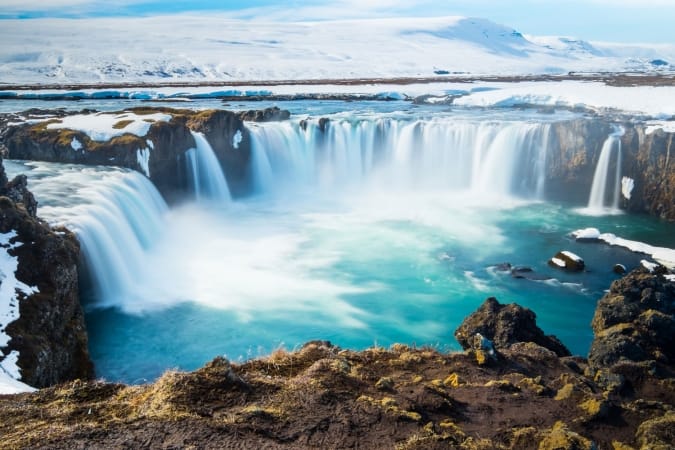
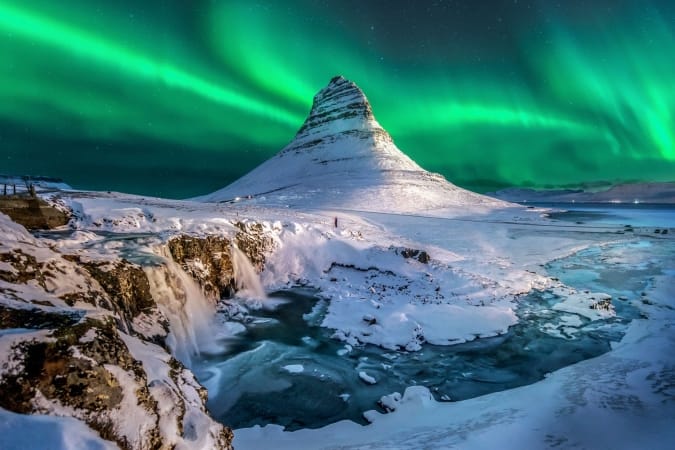

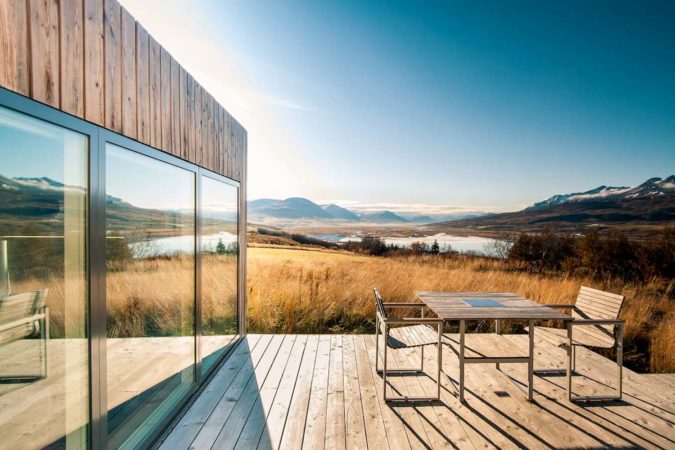
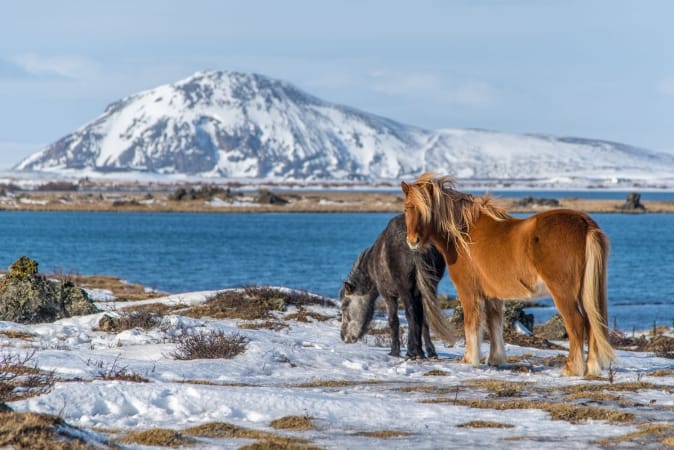
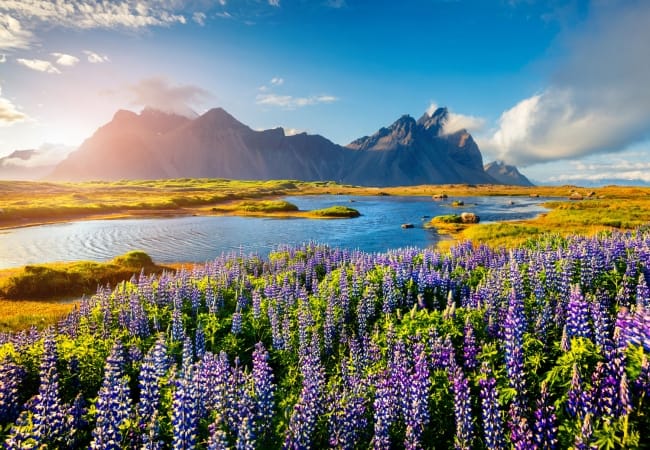
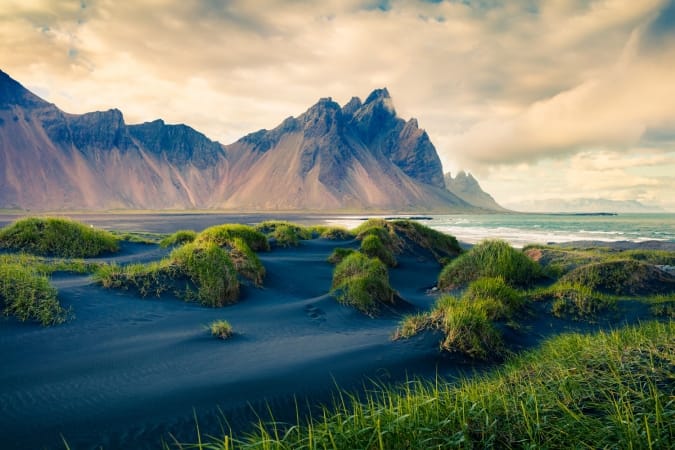
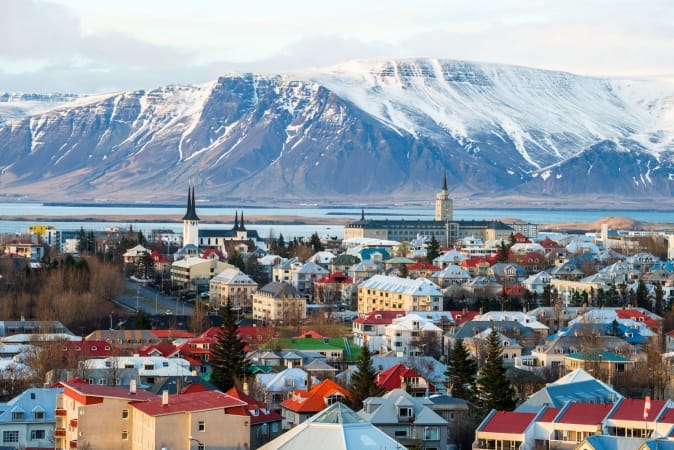
Comments